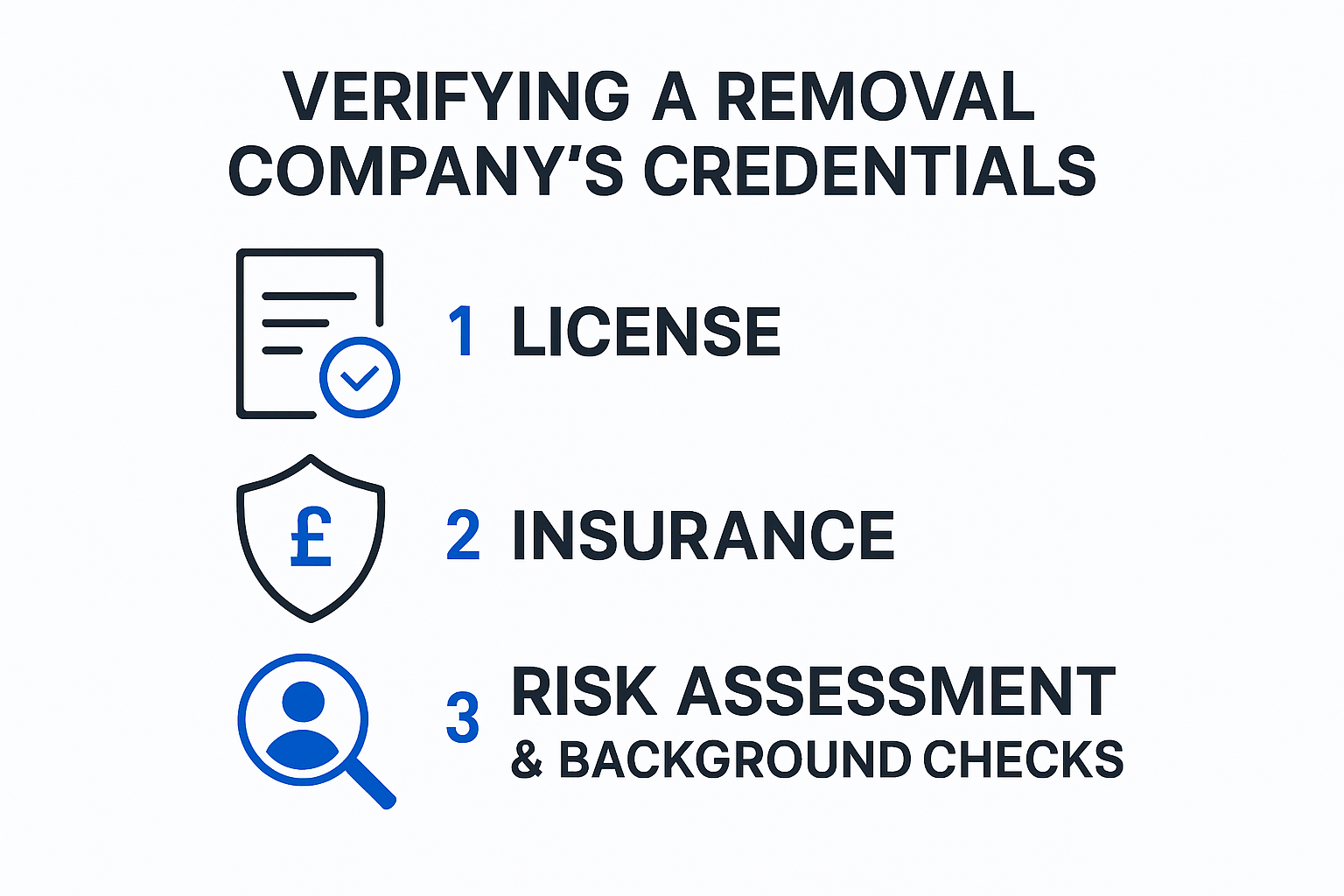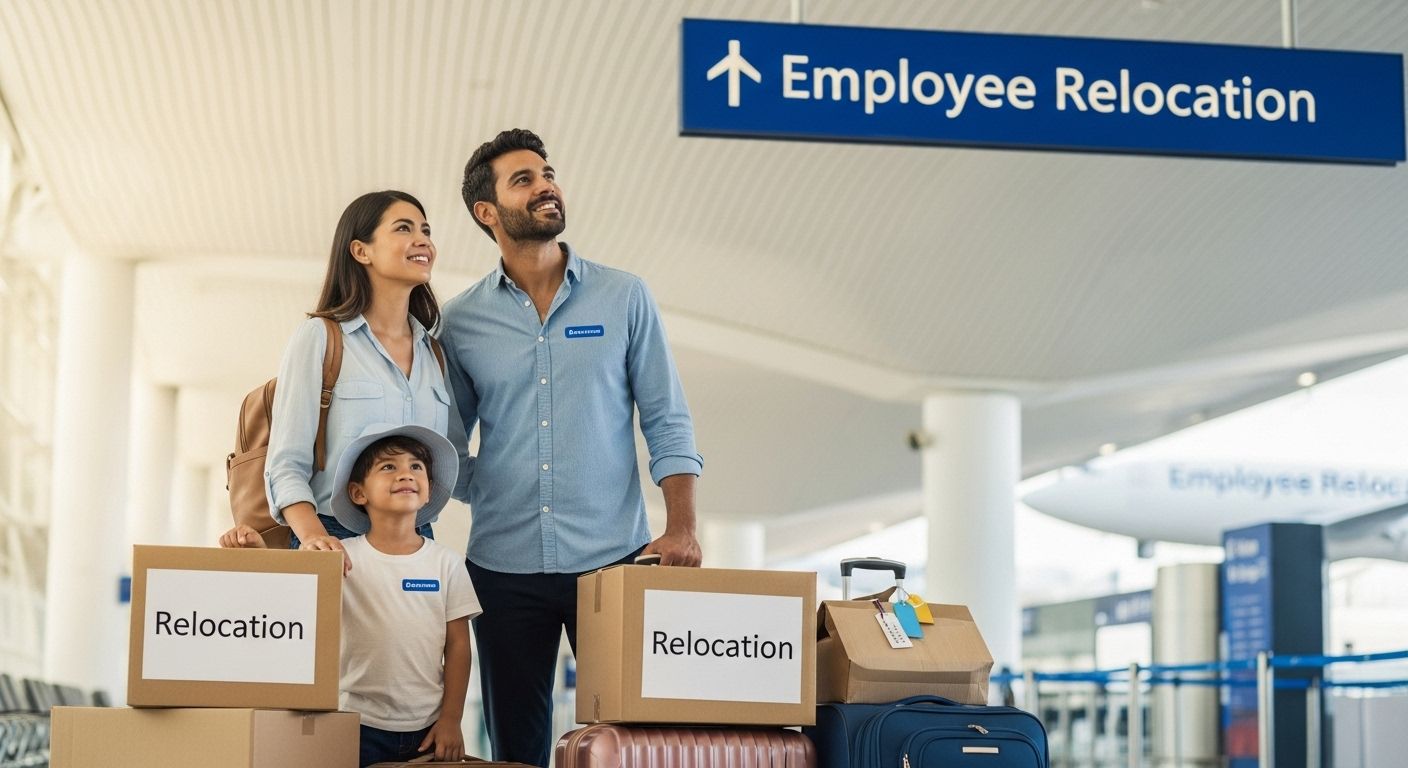Relocating employees can feel like an impossible puzzle for managers and HR teams. Each year, over 60 percent of UK employers report that family and financial concerns are the top reasons relocations fail. Most assume the biggest challenge is packing boxes or finding a removal van. But the real key is something else entirely. Supporting families and ensuring transparent financial help make or break the move before the van even arrives.
| Takeaway | Explanation |
|---|---|
| Conduct a thorough needs assessment | Evaluate employee requirements and strategic goals prior to relocation for smooth transitions. |
| Implement transparent financial support frameworks | Create clear financial structures for relocation expenses, including bonuses and allowances to ensure employee satisfaction. |
| Choose reliable and insured removal companies | Verify credentials and insurance to ensure a professional and secure relocation process with minimal risks. |
| Provide holistic support for families | Assist with spousal employment and schooling to ease the transition for the relocating employee’s family. |
| Prioritise strategic pre-relocation planning | Focus on logistics and cultural training to ensure employees and families adapt effectively to their new locations. |
Employee relocation requires meticulous planning and strategic approach to ensure a smooth transition for both the organisation and the staff member. Comprehensive preparation can significantly reduce stress and potential complications during the move.
Before initiating any relocation process, organisations must conduct a thorough needs assessment. According to the Society for Human Resource Management, this involves evaluating the specific requirements of the employee and the strategic objectives of the company. Key considerations include understanding the employee’s family situation, professional development opportunities, and potential challenges associated with geographical relocation.
A strategic relocation plan should outline clear timelines, budgetary allocations, and support mechanisms. This might include comprehensive packages that cover moving expenses, temporary housing, and potential salary adjustments to reflect the new location’s cost of living. Our comprehensive guide on office removals provides additional insights into managing complex relocation logistics.
Financial considerations are paramount in employee relocation. The International Association for Human Resources Information Management highlights the importance of creating transparent financial support structures. These typically encompass relocation bonuses, travel expenses, housing allowances, and potential tax implications. Some organisations implement payback clauses requiring employees to remain with the company for a specified period after relocation to protect their investment.
Technology plays a crucial role in modern relocation management. Utilising specialised relocation management software can streamline documentation, expense tracking, and communication processes. This technological approach ensures transparency and reduces administrative burden for both HR departments and relocating employees.
Successful employee relocation extends beyond logistical arrangements. Providing comprehensive support for the employee’s entire family is critical. This might include assistance with spousal employment opportunities, schooling for children, and resources to help the family adapt to the new geographical area.
Effective communication remains the cornerstone of successful relocation. Regular check-ins, clear documentation of expectations, and personalised support can significantly reduce relocation stress. Organisations should develop a structured communication plan that keeps the employee informed and supported throughout every stage of the relocation process.
By implementing these strategic approaches, companies can transform employee relocation from a potentially disruptive experience into a positive professional opportunity that demonstrates genuine commitment to their workforce’s wellbeing and career development.
To clarify the key steps involved in planning a successful employee relocation, the following table summarises the main stages and core activities described above:
| Step | Key Activities |
|---|---|
| Needs Assessment | Evaluate employee’s personal, family, and career requirements; align with company goals |
| Strategic Planning | Set timelines, budget allocations, support mechanisms; tailor to individual circumstances |
| Financial Support Frameworks | Provide bonuses, allowances, relocation expenses; clarify tax and payback structures |
| Logistical Arrangements | Organise moving services, temporary housing, shipping, and equipment logistics |
| Employee & Family Support | Assist with spousal employment, schooling, and adaptation resources; maintain regular communication |
| Monitoring & Adjustment | Regular check-ins, feedback loops, and adjust support as needed during relocation process |

Selecting a reliable and insured removal company is crucial for ensuring a smooth and secure employee relocation process. The right moving partner can significantly reduce stress and potential complications during the transition.
Before engaging a removal company, comprehensive verification of their credentials is essential. According to MoveBuddha, companies must comply with specific regulatory standards that demonstrate their professionalism and reliability. This involves checking their registration status, insurance coverage, and adherence to industry regulations.
Key verification steps include:
Our expert guide on choosing removal services provides additional insights into evaluating potential moving partners effectively.
Risk management is paramount when selecting a removal company for employee relocations. The Federal Motor Carrier Safety Administration recommends obtaining written estimates based on comprehensive in-person inspections. These detailed assessments help prevent unexpected costs and ensure accurate planning.
Companies should prioritize movers who offer:
Thorough background research is critical in selecting a removal company. According to Allied Van Lines, organisations should systematically evaluate potential movers by examining their track record, customer testimonials, and professional reputation.
Recommended background check strategies include:
By implementing a rigorous selection process, organisations can mitigate risks and ensure a professional, secure, and efficient employee relocation experience. The right removal partner transforms a potentially stressful transition into a seamless, well-managed process that demonstrates commitment to employee welfare.
The following table compares the core verification, risk, and due diligence measures recommended when selecting a removal company, as outlined in the section above.
| Evaluation Area | Essential Actions | Purpose |
|---|---|---|
| Credentials Verification | Check licenses, insurance, accreditations | Ensure professionalism & legal compliance |
| Risk Assessment | Obtain in-person estimates, confirm insurance, review inventory | Prevent unexpected costs & losses |
| Due Diligence | Review feedback, request references, assess relevant experience | Validate reputation & suitability for project |
Effective management of high-value items during employee relocation requires meticulous planning, specialised techniques, and comprehensive protection strategies. The process demands a strategic approach to ensure the safety and integrity of sensitive equipment, important documents, and valuable company assets.
Packing high-value corporate assets demands exceptional care and precision. According to the Canadian Centre for Occupational Health and Safety, organisations must implement rigorous packing protocols that minimise potential damage risks. This involves using industry-standard protective materials, creating comprehensive inventory lists, and employing specialised packaging techniques for different types of equipment.
Key considerations for high-value item protection include:
Our detailed guide on managing moving logistics offers additional insights into protecting valuable corporate assets during relocation.
Secure storage solutions are critical when managing high-value items during employee relocations. The U.S. Forest Service’s Move Handbook emphasises the importance of creating controlled environments that protect sensitive materials from potential damage. This involves selecting climate-controlled storage facilities, implementing strict access controls, and maintaining detailed tracking systems.
Organisations should prioritise storage solutions that offer:
Comprehensive documentation and risk management are essential when handling high-value items during relocation. This process involves creating detailed condition reports, implementing robust tracking mechanisms, and establishing clear accountability protocols. Organisations must develop systematic approaches that provide transparency and protection throughout the moving process.
Effective risk mitigation strategies include:
By adopting these sophisticated approaches, organisations can transform the potentially stressful process of relocating high-value items into a controlled, secure, and professional experience. Proper planning, specialised techniques, and a commitment to detailed protection ensure that valuable corporate assets remain safe and intact throughout the relocation journey.
International and long-distance employee relocations represent complex logistical challenges that demand comprehensive planning, strategic preparation, and nuanced cultural understanding. Successfully managing these relocations requires a multifaceted approach that addresses professional, personal, and administrative considerations.
Effective international relocations begin with meticulous pre-move preparation. According to the Society for Human Resource Management, maintaining robust communication channels is crucial for expatriate employees. This involves creating comprehensive support systems that extend beyond logistical arrangements.
Key pre-relocation planning elements include:
Our comprehensive international removals guide provides additional insights into navigating complex international relocation processes.
Managing the administrative complexities of international relocations requires systematic approaches. The Federal Employee Education & Assistance Fund recommends a strategic categorisation of items based on multiple factors, ensuring efficient and organised moving processes.
Critical logistical considerations include:
Successful international relocations extend far beyond physical transportation of belongings. Relocate Magazine emphasises the importance of comprehensive transition support, recommending pre-move destination visits to help employees and their families adjust.
Holistic transition support strategies include:

By implementing these sophisticated strategies, organisations can transform potentially challenging international relocations into positive, growth-oriented experiences. The key lies in recognising that successful relocation is a comprehensive journey involving professional development, personal adaptation, and organisational support.
Careful planning, empathetic approach, and systematic implementation can convert the complexities of international moves into opportunities for professional and personal growth, ultimately benefiting both the employee and the organisation.
To plan an employee relocation, begin with a comprehensive needs assessment to evaluate the employee’s situation and align it with the company’s objectives. Next, develop a strategic relocation plan that includes timelines, budgets, and support mechanisms. Implement transparent financial support frameworks and ensure holistic support for the employee and their family throughout the process.
Companies can support families by providing assistance with spousal employment opportunities, schooling for children, and resources to help them adjust to the new location. Regular communication and personalized support are also essential in reducing relocation stress for the entire family.
Choosing reliable and insured removal companies is crucial to ensure a smooth and secure relocation process. Verified companies reduce the risk of complications during the move, protect valuable items from damage, and provide peace of mind to both the employer and the relocating employee.
International relocations require thorough pre-relocation planning, including cultural training, language support, and managing documentation like visas and work permits. It’s also important to consider financial planning and regulatory compliance to ensure a successful transition for both the employee and their family.
Managing employee relocations is about much more than moving furniture. The article highlighted the challenge of supporting families and providing complete transparency with financial support. These crucial steps often get overlooked, leading to unnecessary pressure on both employees and HR teams. With so much at stake, from safeguarding valuable equipment to ensuring your staff feel secure in their move, finding a reliable and experienced partner can make all the difference.

Take the uncertainty out of corporate relocation. Schott Removals draws on over 30 years of specialised service to deliver a smooth experience for your business or staff member. If you want professional packing, protected storage, or trusted shipping across the UK and Europe, discover just how simple your move could be. Visit Schott Removals today or dive into our moving day logistics guide to see how every detail is managed for your peace of mind. For tailored guidance, request your online quote now and ensure every aspect of your next employee move is handled with genuine care.
Unit 20, Lingfield Point
McMullen Road,
Darlington
DL1 1RW
Telephone: 01325 487091
Email: info@schottremovals.co.uk